Looking for the best tips for a plastic-free kitchen? Then you've come to the right place! I avoid as much plastic (waste) as possible in the kitchen - both in the food itself and in the kitchen utensils, chopping boards and storage items.
In this article, I will give you my best tips for a kitchen that is as plastic-free as possible. You'll soon realize that it's not that complicated.
17 tips for a kitchen that is as plastic-free as possible
These tips will help you get closer to a zero waste kitchen. However, you shouldn't just throw everything away and replace it, but simply use many things for as long as possible until they reach the end of their life. This way, you can give your plastic kitchen utensil as long a life as possible before it can be recycled. Everything clear? Then let's get started!
1. use wax paper instead of cling film
Wax paper is the Ideal replacement for classic plastic cling film. This is because it can be reused and is made from natural materials. I myself use Cloths made from organic cotton and vegetable wax (you can get here*), but there are also classic Beeswax cloths. (e.g. here*)
Either way they make Keep food for longer and avoid huge amounts of disposable waste. Storage with the cloths works perfectly and is an important part of the kitchen without plastic.
Tip: You can get your Even make your own oilcloths! You can find out how this works in the linked article.
2. wooden cutting boards prefer
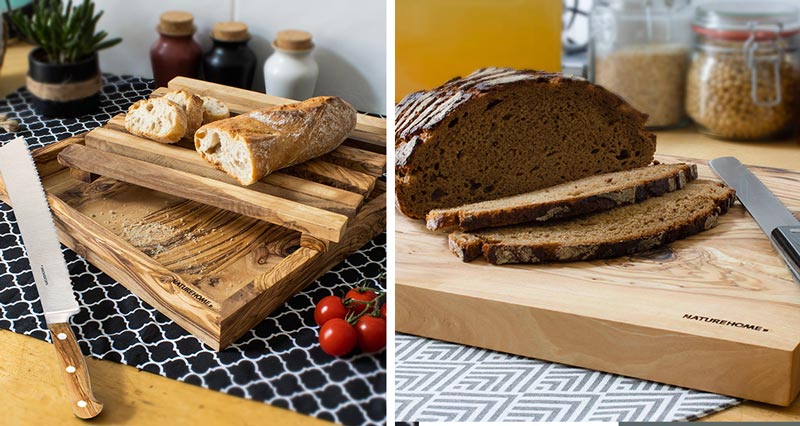
Do you still have plastic breakfast boards in your kitchen? And your chopping boards aren't plastic-free either? On the way to your plastic-free kitchen, you should replace them. As sustainable and eternally reusable material are suitable for Cutting boards woodstone and also pressed rice husks. They all look great and really do last an eternity.
3. make your own washing-up liquid
Making washing-up liquid bottles Regular plastic waste in the kitchen - often the detergent itself is also mixed with chemical ingredients compiled. In the article Make your own washing-up liquidyou will learn step by step how easy it is to make your own washing-up liquid. All you need is the wonder weapon Baking soda and natural vegetable soap.
Just as well works the DIY washing-up liquid also made from ivy leaves. You can also find out how easy it is to make in the linked article.
4. tap water from glass or stainless steel bottle drink
For me, my glass or stainless steel drinking bottle is the most important part of the Zero Waste Basic Equipment. Not only because the drinking bottles do not use plastic, but also because the Tap water tastes betteris cheaper and does not involve lugging water containers directly into the home.
Tip: I can give you these Stainless steel drinking bottle* or these Soulbottle glass bottle* recommend!
5. get plastic free juicers
We had a plastic juicer at home for a long time for lemons and other citrus fruits. When the broke, we are then directly on a Wood juicer switched. A cool accessory in the kitchen without plastic that really lasts forever.
6. stainless steel straws OR GLASS
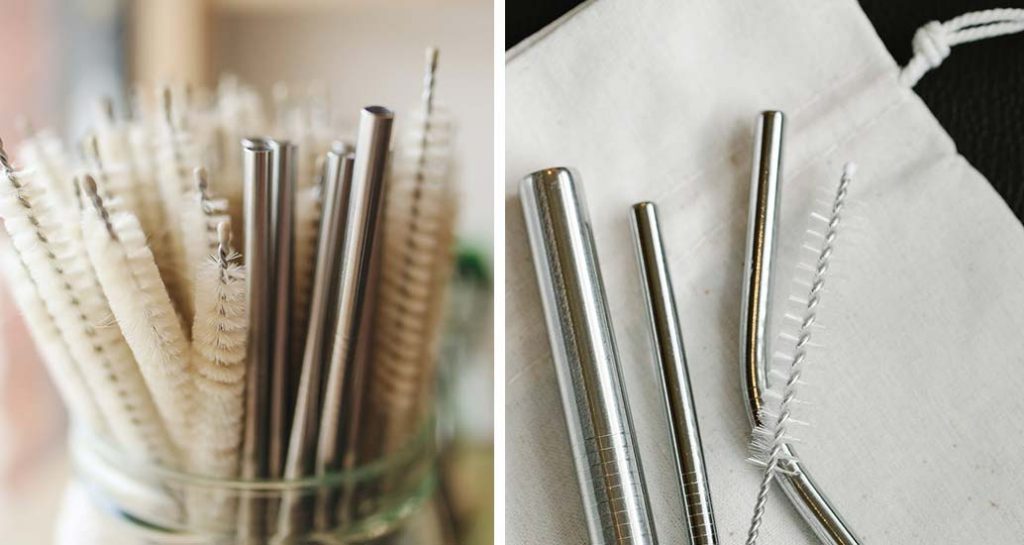
Plastic straws are particularly easy to avoid. There are hardly any disposable products for which there are so many plastic-free alternatives. Simply use reusable Stainless steel strawsglass or bamboo wood for your plastic-free kitchen. Or do without straws altogether, of course that works too 😉.
7. say byebye to coffee capes
Every year, we Germans consume About two billion plastic coffee capsules and create around 4000 tons of plastic waste.₁ Treat yourself to a roasted coffee from the paper packaging instead. You can filter it with stainless steel reusable coffee filtersto avoid further waste.
8. use cloth towels instead of paper towels
Let's be honest: many people use classic kitchen paper for every little stain in the kitchen. Even if the kitchen paper itself is made from sustainable material, it is now once wrapped in plastic. For a plastic-free kitchen, simply switch to reusable cloth towels and wash them regularly. This saves plastic and paper waste and conserves natural resources.
9. plastic-free preserving jars use for storage
Zero Waste is a real lifestyle. In my opinion, the following are representative of this Preserving jars, which can be used both wonderfully to aesthetic storage as well as to the Grocery shopping (for example in the unpackaged food store). The next step towards a plastic-free kitchen!
10. natural garbage bag instead of plastic bag
The bin liner for your waste doesn't have to be made of plastic either. There are now countless Biodegradable bin liners - However, they can still cause problems in the recycling process. In a kitchen that is as plastic-free as possible, you can therefore also save your Fold your own bin liners from old newspaper or line your trash can with cardboard paper.
11. wooden dishwashing brushes
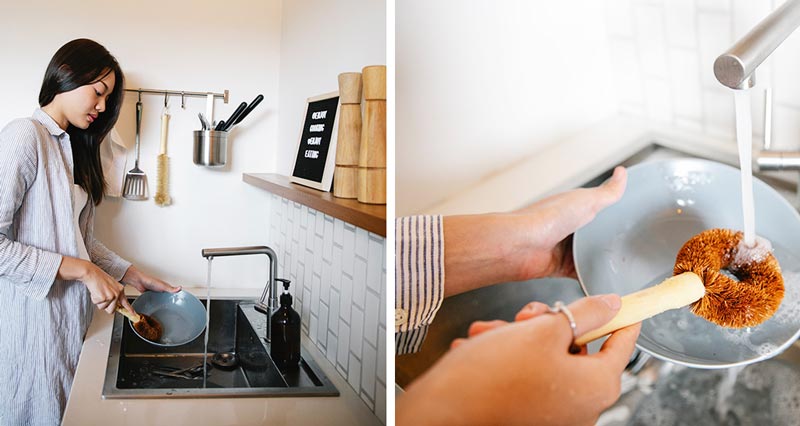
The plastic dishwashing brushes are certainly very cheap, but can be easily replaced with a plastic-free alternative the next time they become unusable. Wooden dishwashing brushes I can recommend to you! They make visually something, last at least as long - and also the In most cases, bristles are made of fiber, a vegetable fiber.
12. grow your own herbs
If you are looking for herbs in a Plastic box or in a plastic foil you end up with a lot of plastic waste again. The herbs are also used up quickly. Why do you plant the Don't just grow herbs yourself in the kitchen or garden on? Because this is also part of a plastic-free kitchen and allows you to become a little more plastic-free again.
13. stainless steel can instead of plastic can
If you are preparing a lunch for work, you should not put it in a plastic container, but instead use a Stainless steel lunch box use. It is just as tight, lasts a long time and doesn't smell. This stainless steel box* is the perfect plastic-free alternative for on the go.
Notice: However, please replace your old lunch box only when it has become absolutely unusable. So you use the natural resourcesthat were necessary for the production of the lunch box for as long as possible.
14. tea towels made from natural fibers
Tea towels, napkins and dishcloths are often packaged in plastic or are themselves made of plastic fibers. Reusable Cloths made from linen or other natural fabrics belong in every kitchen without plastic. You can even make them yourself from old T-shirts or tablecloths - perhaps a cool Idea for your next sustainable DIY project? 🙂
15. wooden kitchen utensils
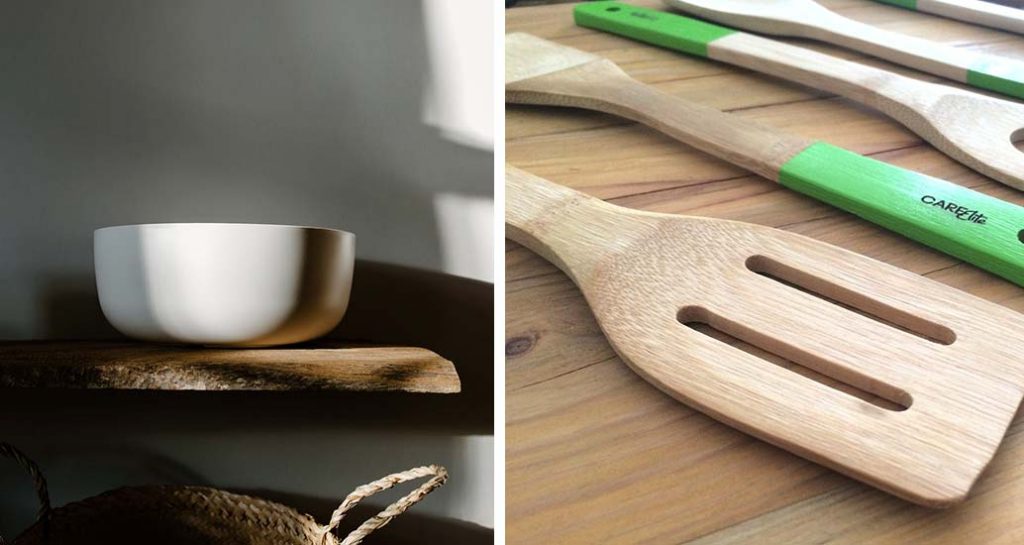
Plastic kitchen utensils have had their day. Why don't you switch to plastic-free Kitchen utensils made from bamboo wood um? Also Pots, pans, boxes and other kitchen items can now do without plastic, can be reused forever and - at least in my experience - last much longer.
Tip: I even have our Dining table homemade from old oak planks. Feel free to look at the construction process and all the important tips about it.
16. also good for a sustainable kitchen
With the tips so far, you're well on your way to a plastic-free kitchen. However, to make it even more sustainable, I would now like to give you a few more tips along the way:
- Don't waste food: In Germany, we are among the leaders in food waste because everything seems to be available in unlimited quantities and is affordable. So try to make targeted attempts, Reduce food waste.
- Reduce your water consumption: In the kitchen in particular, there is great potential to save water in the household and to value the natural resource of water.
- Kitchen made from sustainable materials: The furniture in your kitchen can also be environmentally friendly. From the origin of the wood from regional forests to the pollutant-free paint. Find out more in this article.
- Prefer hand-operated kitchen appliances: To save energy in your plastic-free kitchen, you should use kitchen appliances that do not require electricity and can be used manually. For example such a stainless steel whisk* or the already mentioned Wood juicer*.
Kitchen without plastic? No problem!
There is hardly any other area in our household where there is as much potential for zero waste as in the kitchen! I hope that my tips will help you to achieve a kitchen that is as plastic-free as possible. But please don't stress! The change really doesn't have to happen from one day to the next, but step by step. Simply replace plastic items one by one as soon as they break or you feel like it.
I look forward to your comments with your personal experiences, your questions and possible further ideas for a plastic-free kitchen!
Stay clean,

PS: If you're already designing your kitchen without plastic, you should definitely read the article Plastic free living - tips & tricks read through. There you will find an overview of all my tips for living without plastic. Have fun!
References:
₁ B. Nicolai: We produce 4000 tons of coffee capsule waste (as of 08.01.2014), available at https://www.welt.de/wirtschaft/article123656432/Wir-produzieren-4000-Tonnen-Kaffeekapsel-Muell.html. [09.11.2021].

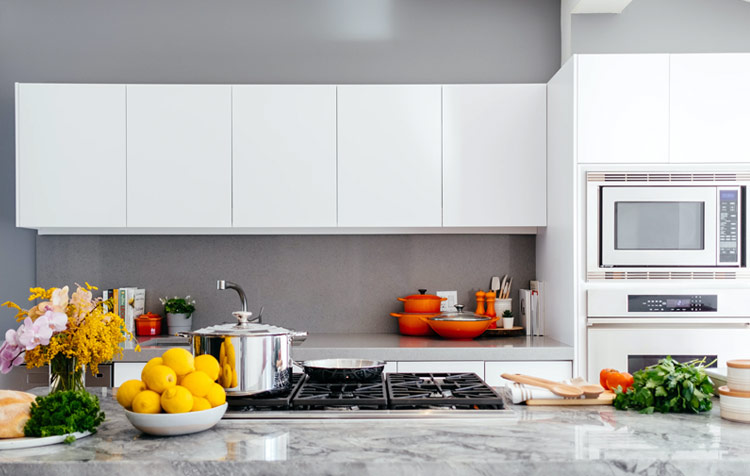

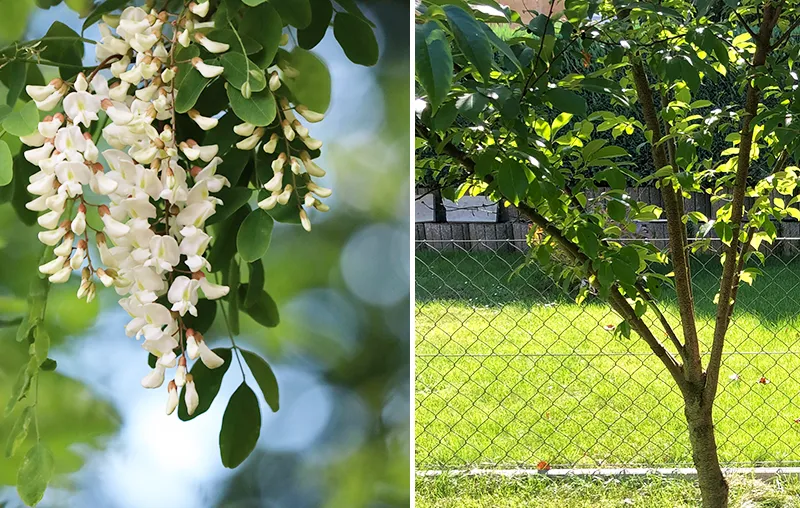
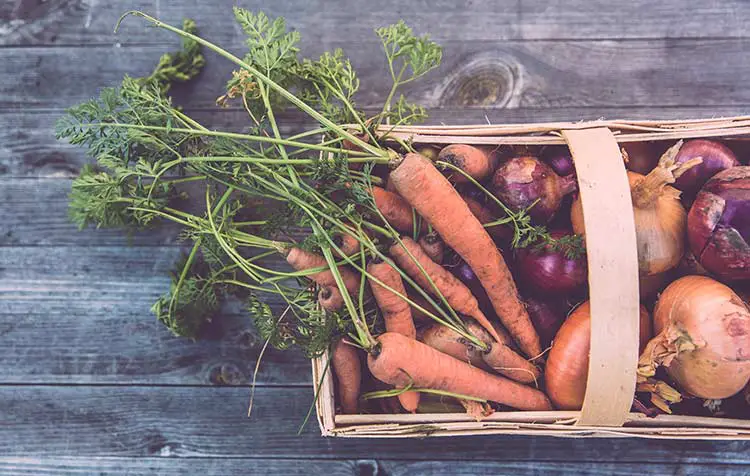

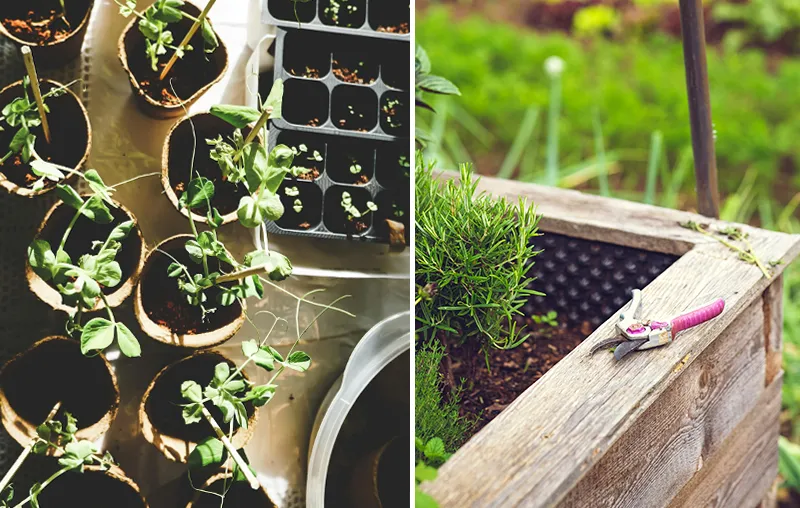
Good morning!
A super collection, I must say, even if in places not new (the topic is increasingly taken up in blogs, etc.).
I'll add my two cents on several points at this point:
1. organic waste bags are not allowed in my organic waste garbage can (determined by the landlords). Therefore I use newspaper. Years ago, I bought a "latticed" organic bin and put two layers of newspaper in it - it works great. Especially since it saves money, because everyone actually gets newspapers at home.
2. even though I myself have the same bamboo cookware as in the picture, I am not proud of it. Of course, bamboo grows fast (compared to other woods), but it is also very often glued. I could not say, for example, if bamboo items are one piece, because as a plant they are not very thick and especially sometimes hollow. With me, in any case, they had an unpleasant taste for a very long time (sauce, etc. to taste over it). Therefore, I avoided it at some point from food to put in my mouth. Long story short: rather take other woods.
But I don't think it's really "right" to banish all plastic from your household, i.e. throw it away, because of the changeover. Nevertheless, it is more ecological to dispose of these items only when they break or something similar. Plastic is very durable (e.g. as a lunch box).
Best regards
Hi Monika! Thanks for your comment, I agree with you on all points.
Now I have to go through my article again, whether I really mentioned somewhere to throw away all plastic things 😉 Of course, that should not be. Tupperware, for example, can still be used forever and that's fine.
Many greetings,
Christoph
Hello Christoph,
quite good tips, although I already implement most of it. By the way, you mentioned to replace plastic only when it breaks, which of course makes sense in my eyes. Super find I also that you learn immediately where you can buy the alternatives.
Many thanks
Hello Ulrike! Thank you for your feedback and your positive attitude.
Keep up the good work,
Christoph
That's all great, but some of it is really difficult or even impossible to implement. Especially with children.
Hello Marcel! It is not easy, that's true. But you do not have to implement everything at once 🙂
Don't be put off by the terms ZERO waste and plastic FREE, think of it as a long term goal and just learn step by step how to avoid waste.
Stay clean,
Christoph
Hello!
Very excited I read your article and get really new ideas. Thank you for it and especially with children to implement well! They should take it with them for the future! I find it a pity that you, although working against consumption and pro nature, almost all products emfehlt calculated via Amazon. Allegedly, for example, all returns go directly to the garbage. I prefer not to support that.
Nevertheless, of course, good thing you do!
Many greetings, Tina
Hi Tina! Thank you for your lovely feedback 🙂
After all, I have been a merchant on Amazon for 2 years. They do not destroy a single returned item from me. I get all unsalable items back and give away, repair or sell them. I can only speak from my seller point of view there. But soon there will be a separate online store from CareElite where then 100% can be shipped plastic-free 🙂
Stay clean,
Christoph
Wood is a super bad alternative is the purest bacteria and germ slingshot comes me under no circumstances in my kitchen and to my food!Instead of this article and household helpers made of silicone use!!!Wood is the biggest shit in connection with food!!!
Hi Susanne! Regularly clean thoroughly, then it goes 🙂
Stay clean,
Christoph
Thank you for the great compilation. Most of it has already been implemented in our house two years ago and is practicable despite the child. You really have to want it!!! Comfortable it is not, especially if you have to organize a job, family and household. But it's doable and getting easier.
Wood and food is not a problem at all! Recently there was a germ test and there was plastic and silicone dirtier than wood. Wood has an antibacterial effect and is for us the best alternative next to stainless steel in the kitchen?
Hi Nana! I find great, keep up the good work 🙂
Remains clean,
Christoph
Hello everyone,after reading many comments , has crystallized for me one very strong : no matter what alternative is offered .....irgendjemand finds a BUT.....wird da förmlichst sought ?
There I get a neck ......der Christoph has made it a passion to show us tips tricks and alternatives ......da there are comments such as: Wood is a germ sling .....I do not know exactly how many centuries already wood is used in the kitchen ......has not harmed anyone .....plastic already!
One should use its common sense and start with the most important and simplest .....beim beim Einkaufen....genug eggs in the trousers have and its will plastic-free to buy through !
The cashier halt my 10 tomatoes 5 apples 20 potatoes unpacked put on the belt ....nervt already with only one customer .... imagine it would make ALL !
My conclusion from the whole plastic madness is: I start with shopping and then work my way forward according to the squirrel method, laboriously but steadily.
It is like with all things ...the mass makes it....in the positive as in the negative.
Many thanks to Christoph for the time you invest for us Beate
P.S. my children have grown up with plastic .....they have both become environmentally conscious adults without any great effort .....common sense !
Hi Beate!
Thanks for your comment and support 🙂 That's part of it, together we are all trying to do more and more right. Everything at once is difficult.
Many greetings,
Christoph
A very factually written article without the usual demonization of plastic. I think one should remain balanced. I love my plastic storage cans, which have been in my household for 20 years. When I think about how many times they have fallen off, with glass it would be problematic. There are now also events where glass bottles are banned.
I agree with you about plastic as disposable packaging, saving really makes sense. I now get dishwashing liquid and Co. In refill bags, so that I don't have to dispose of the whole spray bottle every time.
The best thing I found was the citrus juicer, which was completely new to me. Thank you for this innovation.
Hi, thanks for your comment and please excuse my late reply. Yes the lunch boxes last forever, that is also good.
Thanks for your feedback!
All the best,
Christoph
Hi! Really great for starters. I can not recommend the bamboo kitchen roll, unfortunately, after multiple washing they are badly deformed. But what works great is simply a 10-pack of children's washcloths from the Sweden. Hold forever, absorb a lot and do not stain the other laundry. We use them as kitchen roll replacement, napkins and wet wipes for the hands (kids).
Many greetings
B
Awesome! Thanks for your tip 🙂
Many greetings,
Christoph
I love to implement plastic-free more and more. We have an unpackaged store here, I use that! You know where the food comes from and how it is delivered.
Actually sad, if you consider that in the past all this was already. When no plastic stuff was available.
I think your article is good, however, it is unfortunately a myth that the bags for biodegradable are also good. Just saw a report the other day! Is still plastic. And this is decomposed and enters the earth and groundwater as compost. Microplastic. And with us again on the plate. I always use the newspaper for it. I have a bucket, I put newspaper in it and then the organic waste goes in there. In addition, the bags are not cheap and in the production also absolutely not environmentally friendly.
Thanks for your suggestions.
Hi Melly! That's great to hear! 🙂 Yeah, it's honestly really embarrassing that we slept through the plastic age like this.
Thank you for the hint! The post is already a few days older, meanwhile I know it better.
Best regards,
Christoph
Hello Christoph, very informative and many good ideas!!! What I personally do not find so great are the many links on Amazon. With everything plastic-free you should avoid corporations that treat their employees badly and themselves lack any social, ecological, environmentally friendly thought.
Hi Suzanne, thank you for your comment. This article is already a bit older - it comes from the start phase of the project, where I was dependent on every cent. Now I am revising the whole site, have gained many new partners in addition from Amazon and will create a fair balance for all. I hope this calms you down a bit and wish you a nice evening.
Many greetings
Christoph
PS.: Thank you for your feedback!
Hola Christoph....
On the subject of wood and germ-free, I had to laugh heartily! I was born and raised in South America and have lived here for a long time, but I could never really get used to the germ-free German mentality.
Your ideas are great and I would like to add a little insight to them....we ALL have too much stuff and too little time.
We can learn a lot from the "poor" kitchens in other countries.
Do not think so cerebrally where harmful substances hide, the most harmful are negative thoughts.....Saludos Andrea
Hi Andrea! I see right, a little minimalism and a simultaneous appreciation for what we have would do us all good.
Here in the article, I'm also just giving food for thought about all the plastic-free things you can do in the kitchen 🙂
Many greetings,
Christoph
Hello
I also try small white to do without plastic
But what should I do with the still Tupperware?
And for coffee, we have the Cafisimo capsules to bring back.
Since my husband and I are rarely at home and at most a total of 3 häferl drunk.
Hi Michaela, I think that's great!
Of course, if the Tupperware still works, don't just throw it away, use it as long as you can.
In what way capsules to return? Are they reused? (Sorry, I am not a coffee drinker)
Best regards
Christoph
Kitchen without plastic became the motto of my brother's restaurant. After all, they are beginners, but they made this choice. I mean, it's their first marketing step. But if the kitchen remains open, there each of the regulars can freely see how things are going in the kitchen.
Hi Helga! I think that's awesome. Just because this move is also used as a marketing tool doesn't mean you can still be passionate about it. Good luck and best regards,
Christoph
Hello Christoph,
what I'm still missing here is a plastic-free alternative to the dish sponge. And even conventional dishcloths are often made of plastic (microfiber).
Maybe you still have ideas?
Many greetings
Diana
Hello Diana! Happy New Year. For example, there are loofah rinsing sponges that don't use plastic. I will update the article in a timely manner 🙂 .
Many greetings
Christoph